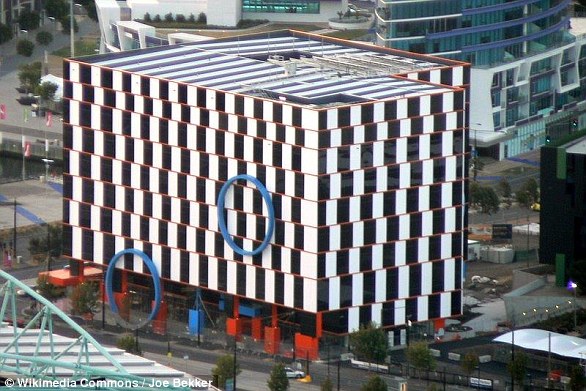Published: | Updated:
If there’s one thing that tests people’s patience, it’s an optical illusion.
From colour-changing images to ‘The Dress’, they have baffled and annoyed people over the internet for years.
And the latest one is no different.
What appears to be a simple picture of a grazing goat actually has a woman’s face hiding in plain sight.
While it may seem an easy task, it’s likely to annoy even the most determined reader.
You may need to have to look at the image from different angles, and from different distances, to spot her.
Clues to her whereabouts lie further down this story.
So, will it leave you feeling frustrated?
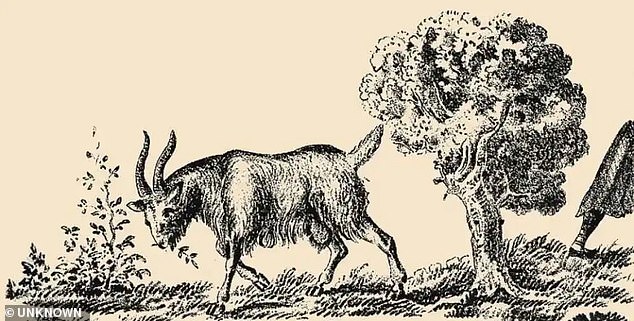
For those struggling to see it, the hidden woman consists of a large face looking left.
The leaves on the tree make up her bushy hair, and the trunk provides the outline for the back of her neck.
The goat’s tail provides the outline for the top of her nose, and her camouflaged eye rests on the edge of the tree branches.
The animal’s hind leg makes up the outline of her chin and throat, and her neck ends at the soil.
If you still can’t spot her, it may help to sit back further from the image.
And once you’ve cracked it, you’ll wonder how you ever missed it.
One of the most well-known optical illusions is a remarkable rabbit-duck illustration, published in 1892.
According to claims circulating online, exactly what you see first can reveal a lot about your personality.
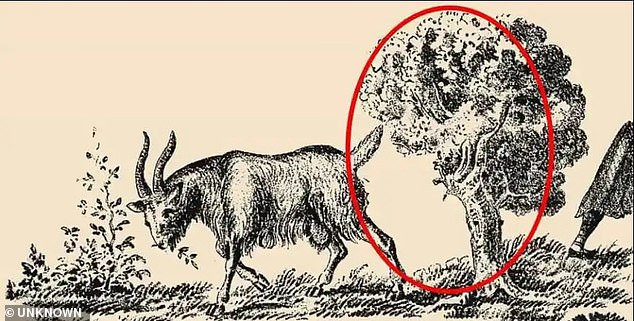
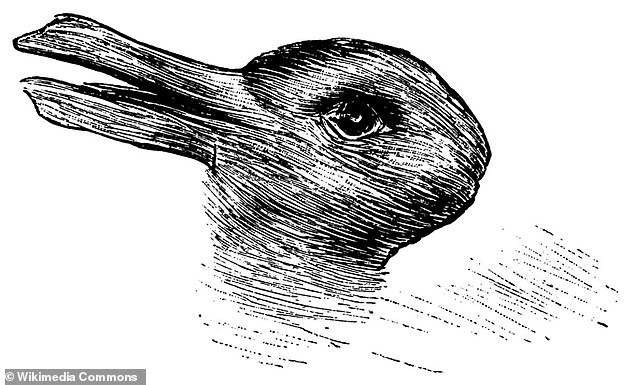
For example, if you see the duck first, you’re supposed to have high levels of emotional stability and optimism.
But if you see a rabbit first, you allegedly have high levels of procrastination.
Experts say people enjoy optical illusions because they raise questions about how our brains work and threaten our view of reality.
They reveal the fascinating ways our minds construct reality, often based on learned assumptions and predictions rather than a purely objective view of the world.
WHAT IS THE CAFÉ WALL OPTICAL ILLUSION?
The café wall optical illusion was first described by Richard Gregory, professor of neuropsychology at the University of Bristol, in 1979.
When alternating columns of dark and light tiles are placed out of line vertically, they can create the illusion that the rows of horizontal lines taper at one end.
The effect depends on the presence of a visible line of gray mortar between the tiles.
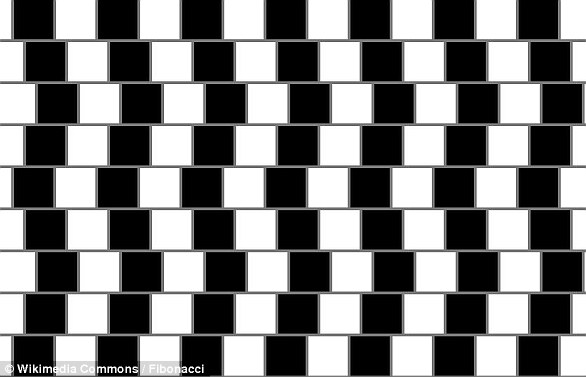
The illusion was first observed when a member of Professor Gregory’s lab noticed an unusual visual effect created by the tiling pattern on the wall of a café at the bottom of St Michael’s Hill in Bristol.
The café, close to the university, was tiled with alternate rows of offset black and white tiles, with visible mortar lines in between.
Diagonal lines are perceived because of the way neurons in the brain interact.
Different types of neurons react to the perception of dark and light colours, and because of the placement of the dark and light tiles, different parts of the grout lines are dimmed or brightened in the retina.
Where there is a brightness contrast across the grout line, a small scale asymmetry occurs whereby half the dark and light tiles move toward each other forming small wedges.
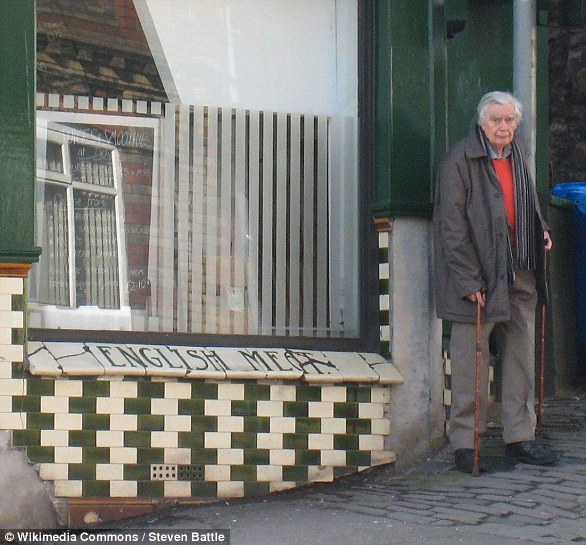
These little wedges are then integrated into long wedges with the brain interpreting the grout line as a sloping line.
Professor Gregory’s findings surrounding the café wall illusion were first published in a 1979 edition of the journal Perception.
The café wall illusion has helped neuropsychologists study the way in which visual information is processed by the brain.
The illusion has also been used in graphic design and art applications, as well as architectural applications.
The effect is also known as the Munsterberg illusion, as it was previously reported in 1897 by Hugo Munsterberg who referred to it as the ‘shifted chequerboard figure.’
It has also been called the ‘illusion of kindergarten patterns’, because it was often seen in the weaving of kindergarten students.
